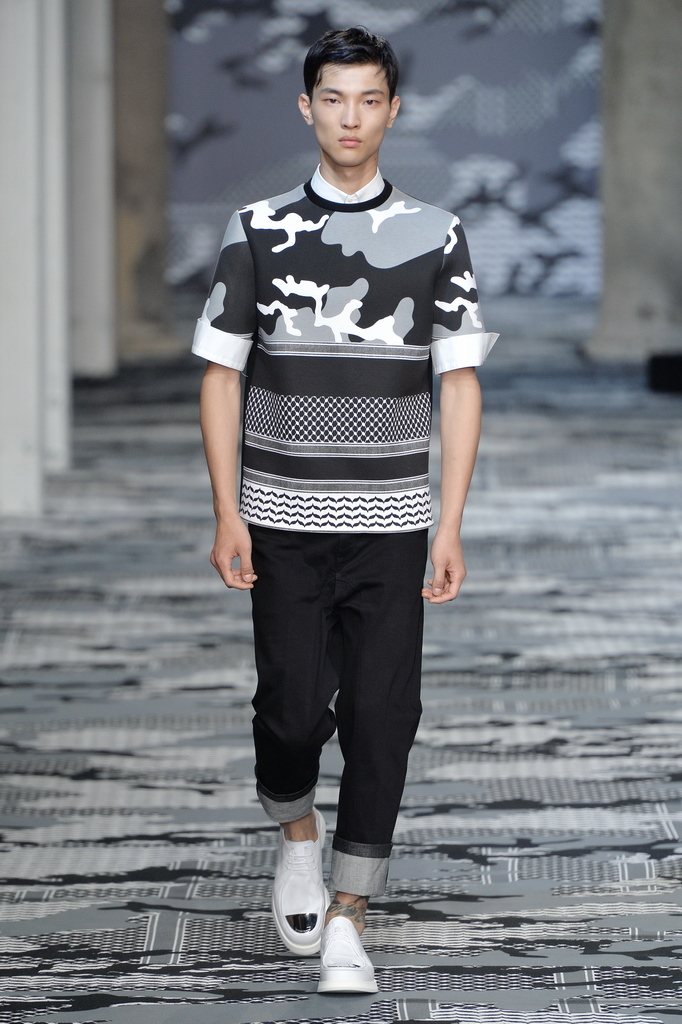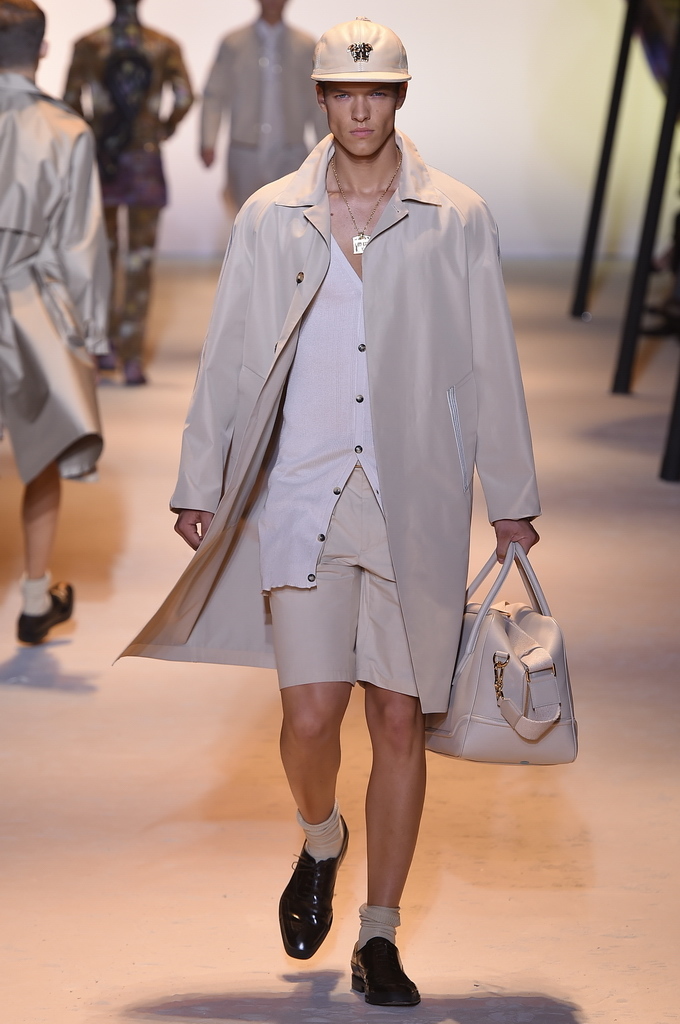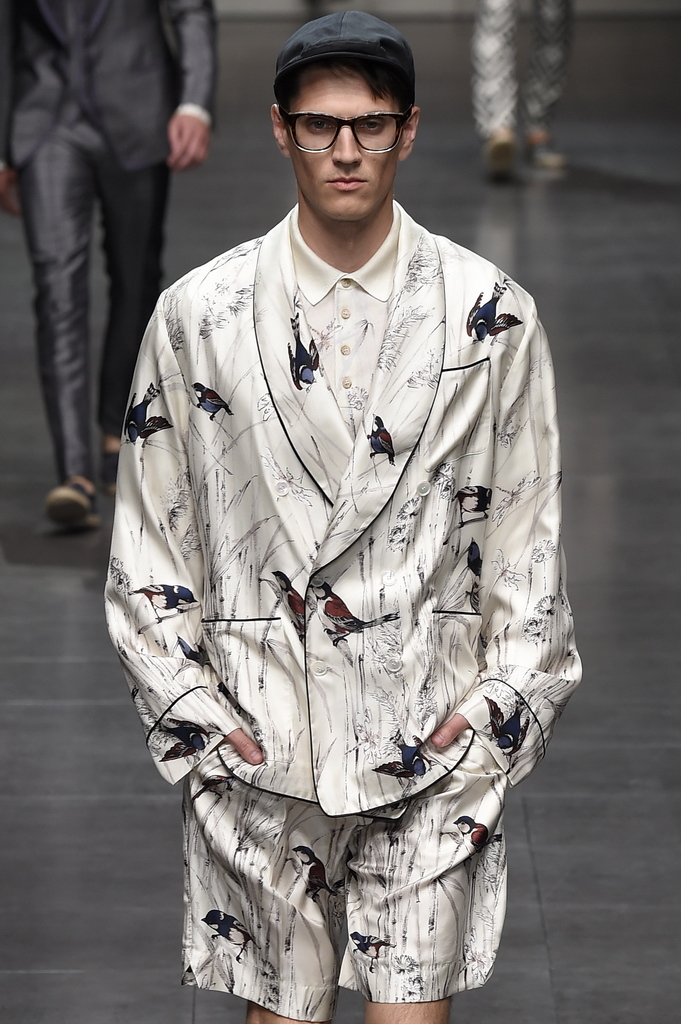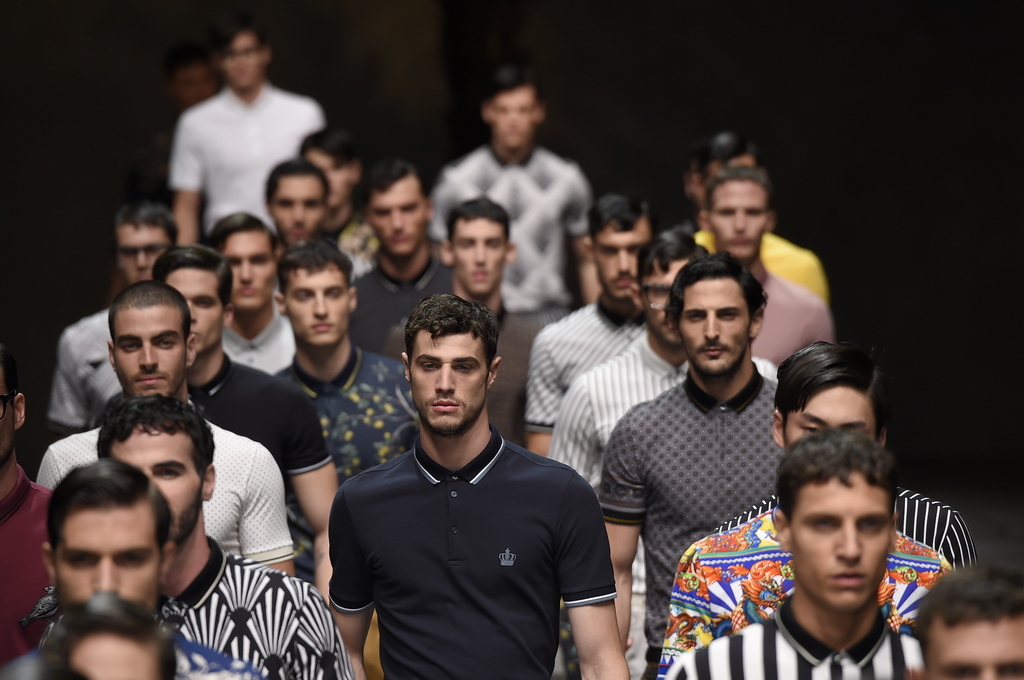It’s a small world, and it only took Milan one day to get most of it into its men’s collections. If globalization can be a trend – and it has little choice in the matter – this was it, with all the multi-cultural elements it could hold. “It just seemed right, as my client is global, to not take a reference point of just one country but to take reference points, which are familiar and extremely masculine in Eastern and Western cultures,” Neil Barrett said after sending models down a catwalk covered in a black and white pattern, so familiar yet so new, wearing that same pattern. “I was taking from the male wardrobe patterns from both Eastern and Western cultures, whether it was the keffiyeh scarf, the camouflage, the batik, the nautical stripe. I call them ‘masculine iconic patterns’, which are like a uniform of masculinity that exists in every culture. I took the patterns and either reworked them or fused patterns to create future classics,” Barrett explained.

His ongoing expansion in China where the Devon-born designer is massive business – and even runs a diffusion label, Black Barrett, exclusive to the region – was no doubt a motivating factor, but what was interesting about Barrett’s collection, much like the rest of Milan’s first spring/summer 16 offerings, was the inclusion and interpretation of non-European cultural trademarks rather than relying on the partiality to Western fashion of the Far and Middle Eastern markets. Donatella Versace tackled the latter territory, partly via Old Hollywood, partly via her own brand history. “No man needs nothing,” read a quote from Lawrence of Arabia splashed across a Bedouin curtain at the root of the sand-covered runway made out of baroque scarves with Middle Eastern features such as camels. “For everybody it’s a dream,” Versace said backstage, referring to her silver screen desert motif. “I saw these macho men going through the desert,” she mused. “It’s a little mysterious.”

Deconstruct the styling and it was pretty much early-mid 90s’ Versace, slouchy tailoring and all that, but as the matriarch noted herself, it was in the lack of “florals and brights” that the desert wardrobe really took shape. Loose-fitting tailoring and a muted color scale are something Giorgio Armani wrote the book on, and while the berets in Saturday’s Emporio Armani show were immediately more Western than anything else, the brand’s revisiting of its classic slouchy silhouette – a shape that very much belongs to Eastern tailoring – was hardly a coincidence. After the Met Ball’s Chinese theme earlier this year, we kind of saw it coming. Dolce & Gabbana certainly didn’t waste any time, pairing China with their go-to reference of Sicily via the Chinese Villa in Palermo. The result was a procession of oriental embellishment on roomy structures, pajama details and a ton of silk. (An embroidered denim trouser and a bejeweled espadrille were particularly dreamy.)

There’s no question about the speed of our current globalization—it’s a fact. As Donatella Versace said, “Obviously I think we’re global. We’re all on the internet!” Rather, the question is whether designers’ use of global inspirations is as much for a global audience as they are for Western fashion fans, who enjoy a bit of an exotic approach to their wardrobes, dragon embroidery and camel scarves etcetera. If you live in a country that’s mastered the art of slouchy silk suits with oriental flower motifs for several centuries, would you be more inclined to get a Sicilian Dolce & Gabbana take on it? And if you can get a keffiyeh scarf on every street corner in your hometown, would you go to Neil Barrett to get his modernist take on it? “No,” Barrett said. “But I feel that every one of us likes to be reminded of certain things from their youth and their growth into a man. And I feel that being global with my perspective and my inspiration is more interesting than being insular or being focused on one area. It seems the natural choice.” Spoken like a true man of the world.
Credits
Text Anders Christian Madsen
Photography Mitchell Sams
